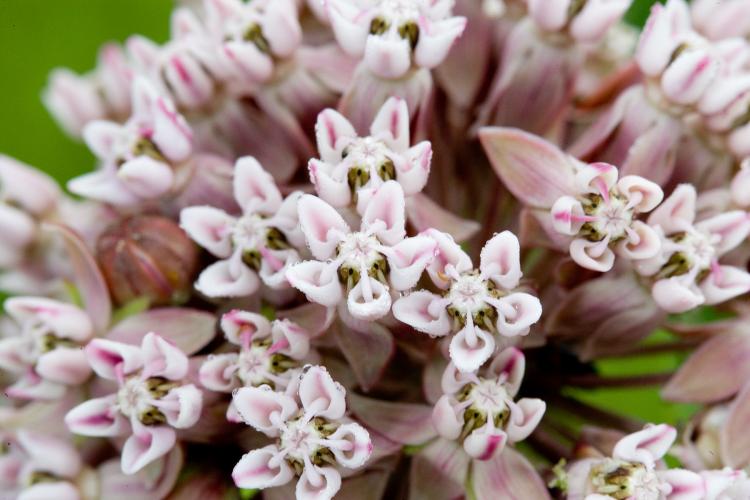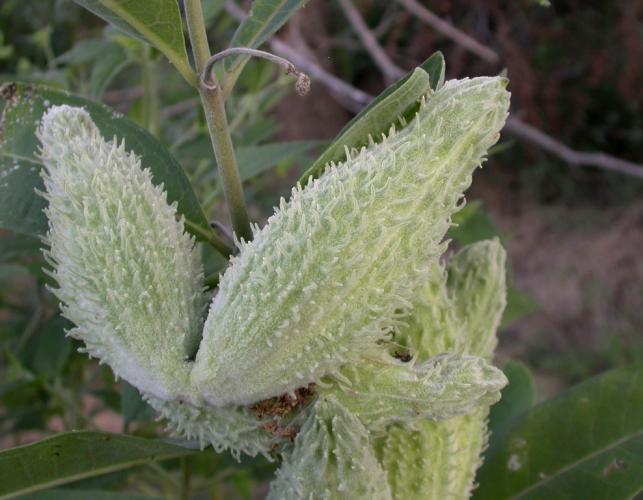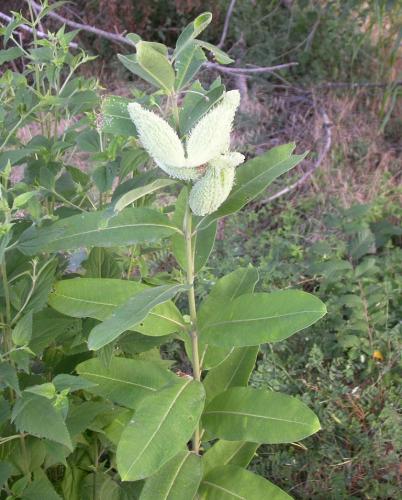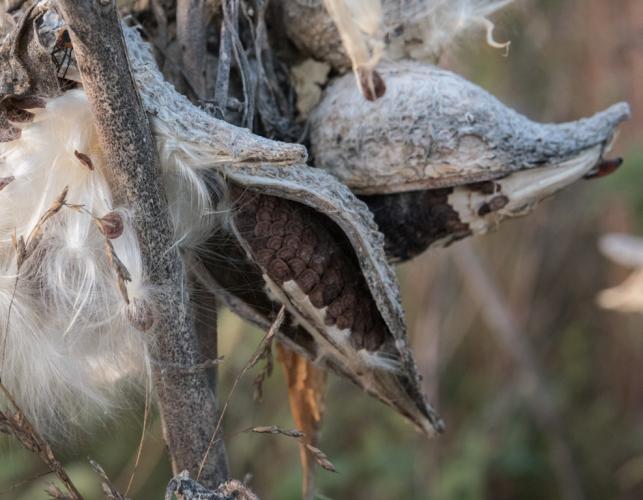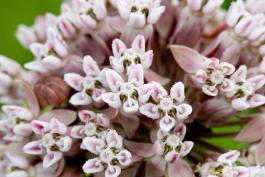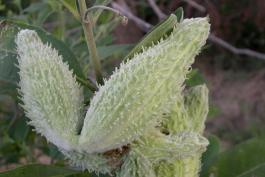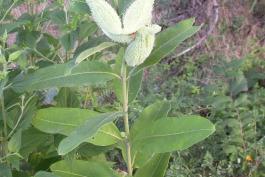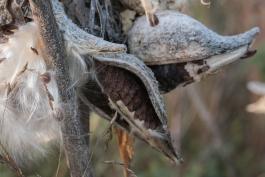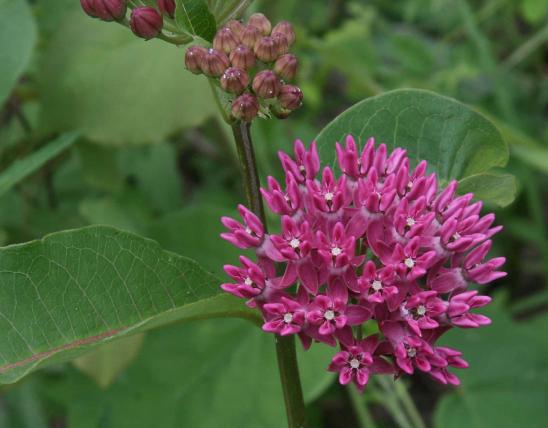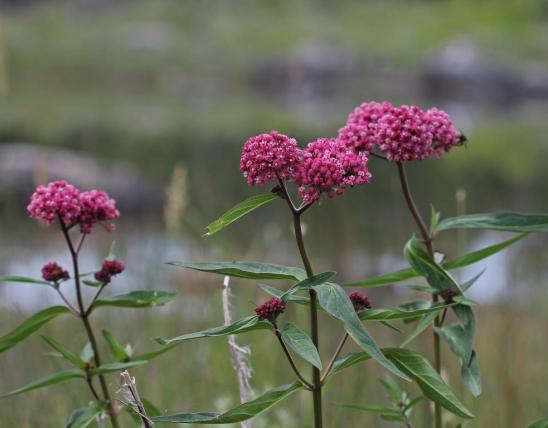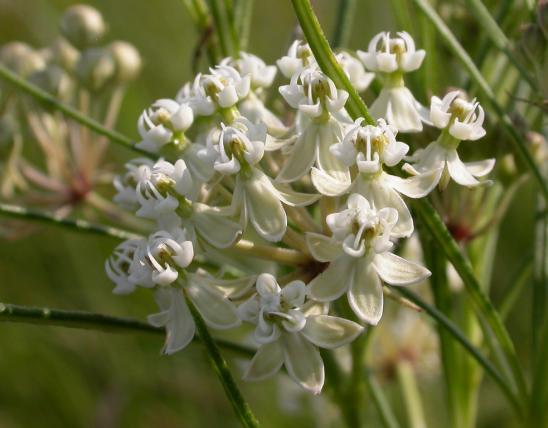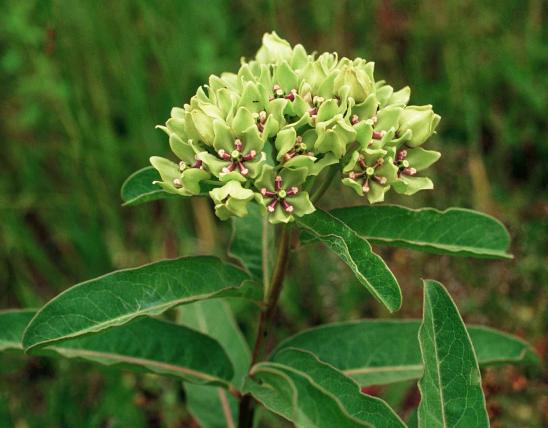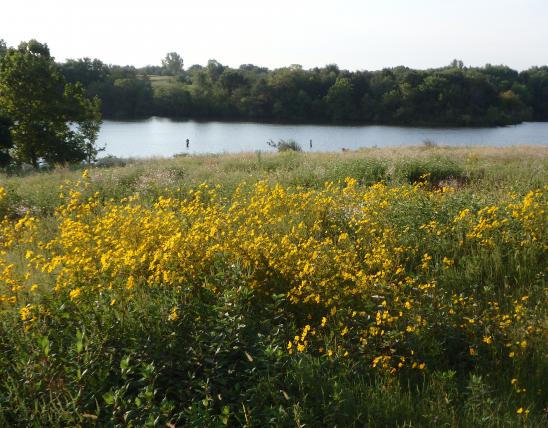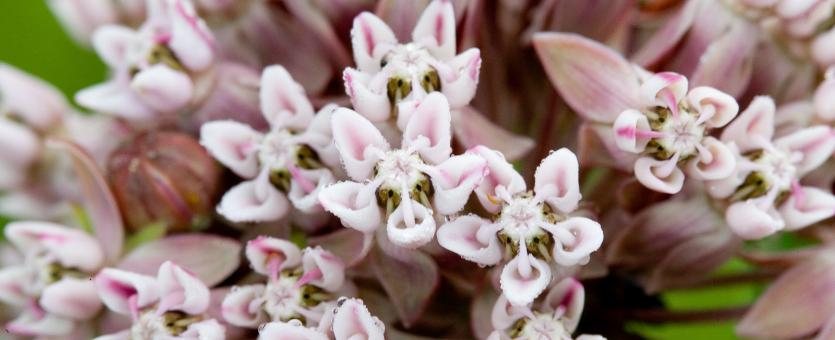
Common milkweed is a sturdy, upright, perennial plant with broad leaves, milky sap, and clusters of pink or lilac flowers. Blooms May–August. Flowers are pink to lilac, very fragrant, borne in clusters terminally and along the stems, arising from leaf axils. Leaves are broadly elliptical, rounded at the base, to 6 inches long, with fine hairs underneath, on distinct leaf stalks. Fruit are large seedpods (follicles), elongated and covered with slender warty projections. When dry, these split to release hundreds of seeds, each attached to a “parachute” of white, silky, flossy hairs that can carry them on the wind.
Similar species: There are 17 species in the genus Asclepias in Missouri. The one most similar to common milkweed is purple milkweed, but its flowers are darker and more purplish, and its pods lack slender warty projections.
Height: usually to about 3–4 feet, but can grow to 6 feet.
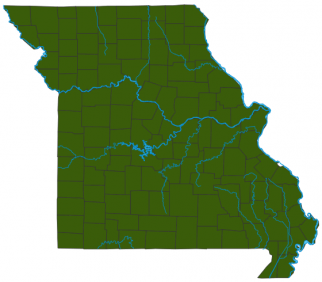
Statewide.
Habitat and Conservation
Grows on upland fields, prairies, pastures, glades, roadsides, wasteland, edges of woods, and open, disturbed places. This is the most commonly seen milkweed, especially in abandoned fields and waste places, where it is an early colonizer of disturbed soil.
Status
Common. This and other native milkweeds are extremely important in conservation of the monarch butterfly, whose numbers are plummeting. Monarchs require milkweeds as larval host plants: Adult monarchs lay eggs on milkweeds, and the caterpillars eat the foliage. Strong herbicides, and the elimination of fence rows and other weedy places, have vastly reduced the number of milkweeds available for monarchs. You can help increase monarch numbers by growing native milkweeds.
Human Connections
This plant has many uses. In the past people have attempted to make rubber out of the sap’s latex. The flossy seed hairs have been used as a stuffing for bedding and for life preservers. The dried pods are used in crafts and flower arrangements. The stem fibers can be used as a source for cordage, similar to flax or hemp.
Ecosystem Connections
This is an important food plant for monarch butterflies, whose caterpillars eat the foliage, storing in their bodies milkweed’s toxic sap. This makes the monarch unpalatable to would-be predators. Many other, less famous insects eat milkweed and defend against predation the same way.
